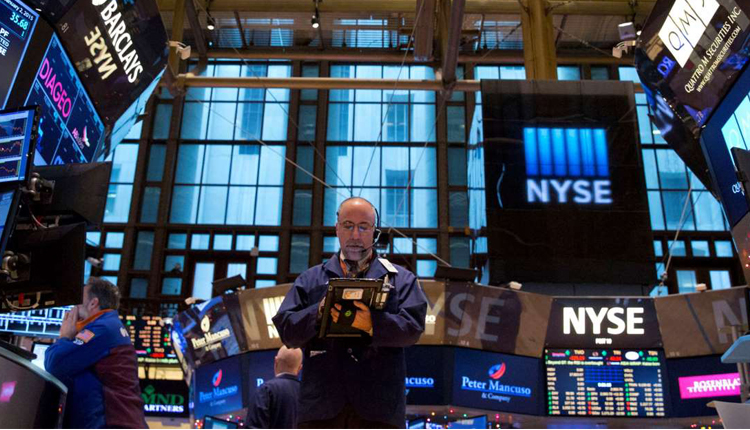The Dow Jones Industrial Average rose for the first time in three days on Monday, but its gains were kept in check as investors continued to fret over a sharp rise in interest rates.
The 30-stock index climbed 39.73 points to 26,486.78, led by gains in Walgreens Boots Alliance. The S&P 500, however, closed just below breakeven at 2,884.43 to post a three-day losing streak. The Nasdaq Composite also pulled back 0.7 percent to 7,735.95, posting its third straight losing session, as large-cap tech shares fell.
Shares of Amazon fell 1.3 percent while Netflix pulled back 0.6 percent. Apple also dipped 0.2 percent.
Interest rates were on a tear last week after the release of several pieces of strong economic data. The benchmark 10-year Treasury note yield rose to above 3.2 percent from around 3.06 percent. The 10-year yield also hit its highest level since 2011 last week.
“The rise in interest rates was sparked by signs that the economy is beginning to run hot,” said Bruce Bittles, chief investment strategist at Baird. “Looking forward, profit margins could come under stress due to rising interest rates, rising wages, four-year highs in energy costs and a strong dollar. We recommend investors concentrate on the strongest sectors including health care and industrials.”
On Friday, the U.S. government said the unemployment rate in the U.S. fell last month to a level not seen in close to 50 years. Overall jobs creation disappointed for last month, but that was offset by sharp upward revisions for the number of jobs created in August and July. Data released last week also showed the U.S. services sector expanded at its fastest pace on record last month.
Federal Reserve Chairman Jerome Powell also said last week monetary policy is “a long way” from neutral, signaling more rate hikes are coming. The Fed has already raised rates three times this year and is forecast to hike once more before year end.
“Interest rate risks remain clearly to the upside,” strategist at MRB Partners said in a note. “The Fed remains on a gradual tightening path, but pressure to accelerate will likely escalate.”
“While the 10-year Treasury yield is rising it is still well below nominal GDP growth,” they said. “In fact, Fed tightening and the rise in the 10-year yield over the past year have been less than the acceleration in economic growth, such that monetary conditions have actually eased.”
U.S. Treasurys did not trade on Monday as the bond market remained closed for Columbus Day.
The sharp rise in rates sent stocks tumbling last week. The S&P 500 posted its worst weekly performance since the week of September 7, while the Nasdaq had its biggest one-week fall since March. The Dow also posted its second straight weekly decline.
The latest corporate earnings season kicks off this week with major banks like Citigroup, J.P. Morgan Chase and Wells Fargo all scheduled to release their latest quarterly results.
S&P 500 earnings are expected to have grown by 19.2 percent in the third quarter, according to FactSet data. Corporate profits grew by more than 20 percent in the first two quarters of the year.
Stocks also fell Monday after a decline in overseas markets.
Chinese stocks saw declines after the People’s Bank of China (PBOC) announced measures on Sunday to cut the amount of cash that banks have to hold as reserves, with the reserve requirement ratios set to be slashed by 100 basis points, effective from next week.
The news comes as the nation continues to battle with the U.S. over a tit-for-tat trade war, and is the fourth time the PBOC has slashed its reserve requirement ratio (RRR) in 2018.
The Shanghai Composite fell 3.7 percent overnight while Korean Kospi index pulled back 0.6 percent. In Europe, the Stoxx 600 index dropped 1.1 percent.
Source: CNBC
